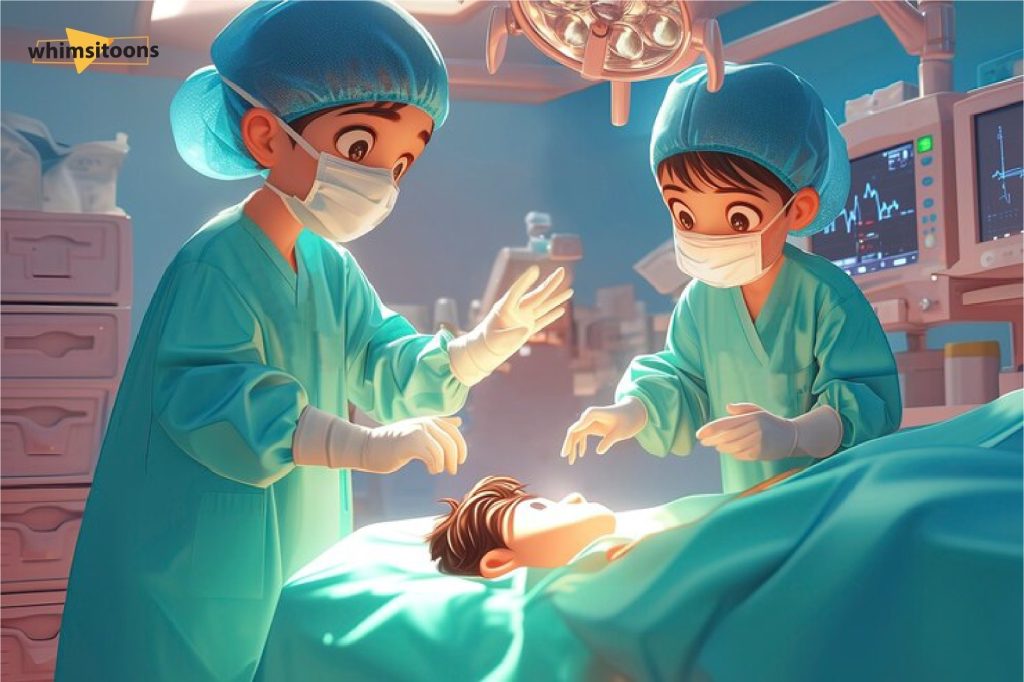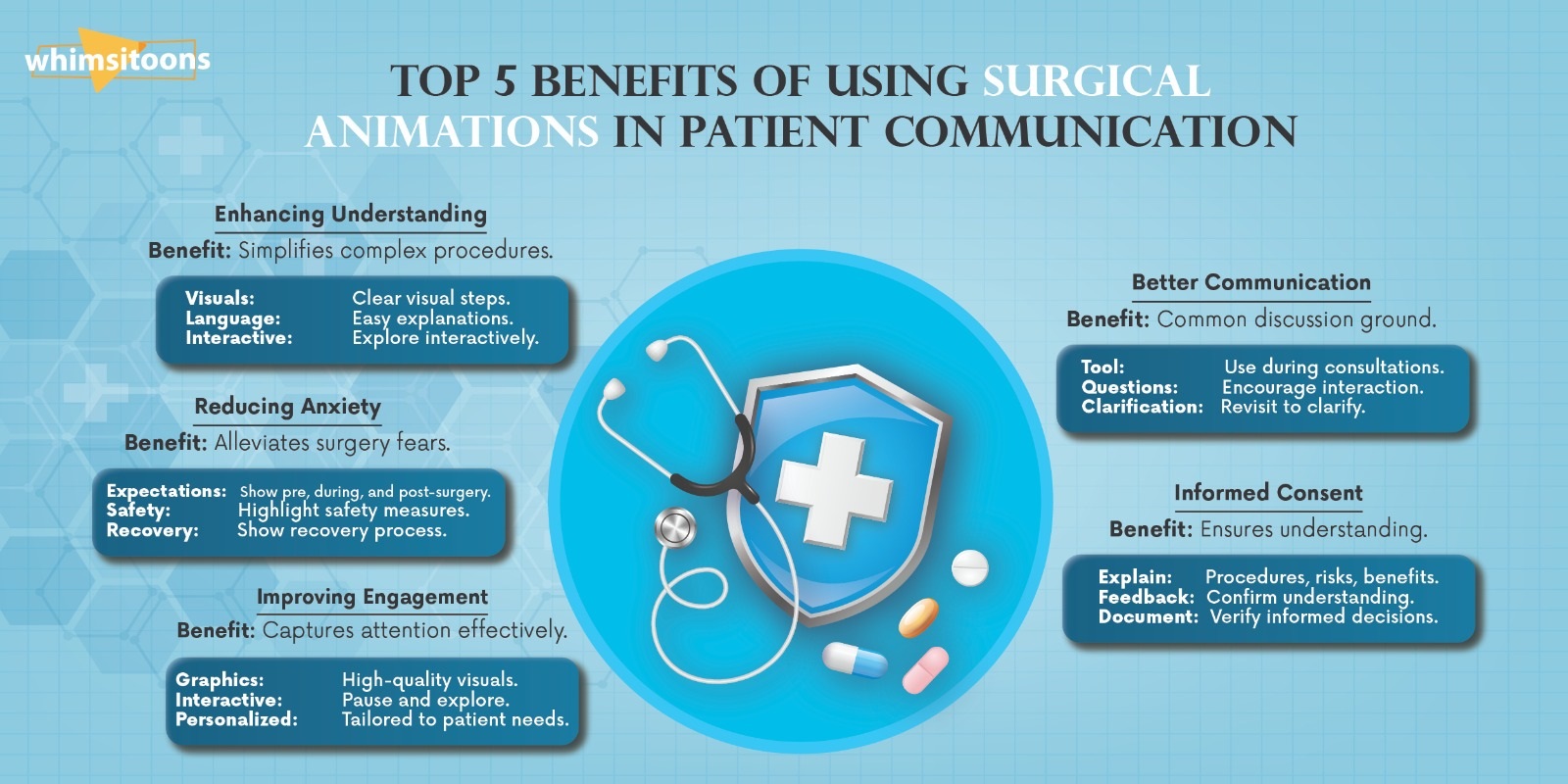Overcoming Budget Constraints: Affordable Surgical Animation Services for Startups

Navigating surgical animation services can be challenging, especially for startups with limited budgets. However, understanding the industry and exploring cost-effective options can lead to high-quality results without breaking the bank. This Whimsitoons guide will walk you through the essentials of securing affordable surgical animation services, ensuring your startup can benefit from these powerful tools without financial strain.
Why Surgical Animation Services Matter
Surgical animations play a crucial role in the medical field. They provide a visual representation of complex procedures, making it easier for healthcare professionals to explain complicated surgical techniques to patients and students. This clarity enhances understanding, boosts patient confidence, and aids in education and training. However, creating these animations requires specialized skills and technology, which can be expensive.

Understanding the Costs
The surgical animation cost varies significantly based on several factors, including complexity, duration, and the level of detail required. To give you a clearer picture, here’s a breakdown of the typical costs involved:
- Basic Animations: $3,000 – $5,000 per minute
- Intermediate Animations: $5,000 – $10,000 per minute
- High-End Animations: $10,000 – $20,000+ per minute
These figures might seem abrupt, especially for startups, but there are ways to manage and reduce these costs without compromising on quality.
Tips for Affordable Surgical Animation Services

1. Define Your Needs Clearly
Before contacting a surgical animation company in the US, clearly understand your project requirements. Determine the exact procedures you need animated, the level of detail necessary, and the target audience. This preparation can help you avoid unnecessary expenses.
2. Choose the Right Partner
Selecting the right surgical animation studio can make a significant difference. Look for companies with a proven track record, positive reviews, and a portfolio that matches your needs. Some surgical animation companies specialize in affordable solutions for startups, so do your research and find a partner that aligns with your budget and requirements.
3. Leverage Technology
Advancements in technology have made it possible to create high-quality animations at a fraction of the cost. Many healthcare animation services use cutting-edge software and tools that streamline the animation process, reducing time and expenses. Ensure your chosen partner utilizes the latest technology to maximize cost efficiency.
4. Opt for 3D Biomedical Animations
While 2D animations can be effective, 3D biomedical animations offer a more immersive and detailed representation of surgical procedures. Surprisingly, some studios offer competitive pricing for 3D animation services, making them a feasible option for startups looking to make a bigger impact.
5. Negotiate and Bundle Services
Feel free to negotiate pricing and ask about bundling services. Many studios offer discounts for long-term projects or multiple animations. Discuss your budget constraints openly with your chosen studio to find a mutually beneficial arrangement.
Affordable Surgical Animation Services: A Step-by-Step Guide
Step 1: Research and Shortlist
Start by researching various surgical animation companies. Look for those that specifically mention affordability or have experience working with startups. Create a shortlist of potential partners.
Step 2: Request Proposals
Get in touch with the companies you’ve shortlisted and ask them for comprehensive proposals. Provide them with your project requirements and budget constraints. Compare the proposals based on pricing, turnaround time, and the quality of their previous work.
Step 3: Consider and Choose
Consider the proposals carefully. Consider not just the cost but also the company’s reputation, communication style, and willingness to accommodate your needs. Choose the partner that offers the best balance of quality and affordability.
Step 4: Plan and Collaborate
Once you’ve selected a partner, work closely with them to plan the project. Clearly communicate your vision, goals, and budget. Regular check-ins and feedback loops help ensure the project stays on track and within budget.
Step 5: Review and Revise
After the initial animation is created, review it thoroughly. Offer constructive feedback and ask for revisions if needed. Most studios include a certain number of revisions in their pricing, so take advantage of this to fine-tune the animation to your satisfaction.
Comparison Table: Cost vs. Quality
To help you make an informed decision, here’s a comparison table highlighting the cost and quality aspects of different animation services:
|
Service Type |
Estimated Cost (per minute) |
Quality Level |
Ideal For |
|
Basic 2D Animation |
$3,000 – $5,000 |
Moderate |
Simple explanations |
|
Intermediate 2D Animation |
$5,000 – $7,500 |
Good |
Educational purposes |
|
Advanced 2D Animation |
$7,500 – $10,000 |
High |
Detailed medical procedures |
|
Basic 3D Animation |
$5,000 – $7,500 |
Good |
Enhanced visual impact |
|
Intermediate 3D Animation |
$7,500 – $12,500 |
Very Good |
Detailed procedural demos |
|
Advanced 3D Animation |
$12,500 – $20,000+ |
Excellent |
High-end professional use |
How to Measure the Success of Surgical Animations
Measuring the success of surgical animations is essential to ensure they effectively achieve their intended goals. Here are some key metrics and methods to consider their impact:
1. Patient Comprehension and Satisfaction
One of the primary goals of surgical animations is to enhance patient understanding of complex procedures. To measure this:
- Surveys and Feedback: Conduct surveys or gather feedback from patients after they have viewed the animations. Ask specific questions about their understanding of the procedure, their comfort level, and whether the animation helped them grasp the details better.
- Patient Interviews: Interview patients to gain deeper insights into their experiences. This can provide qualitative data on how well the animation conveyed the necessary information.
2. Training and Educational Outcomes
Surgical animations are valuable tools for training medical professionals. Assess their effectiveness by:
- Knowledge Assessment: Test the knowledge of medical trainees before and after viewing the animations. Compare the results to measure improvement in understanding.
- Skill Development: Monitor the practical skills of trainees. Track how well they perform the procedures after being trained with the animations compared to traditional training methods.
3. Engagement Metrics
Analyze how engaging the surgical animations are by examining the following:
- Viewership Data: Track the number of views and the duration of each view. High engagement indicates that the animation is holding the viewer’s attention.
- Completion Rates: Measure the percentage of viewers who watch the animation from start to finish. High completion rates suggest that the content is relevant and engaging.
4. Reduction in Pre-Surgery Anxiety
Surgical animations can help relieve patient anxiety by providing clear and detailed explanations of procedures. Estimate this by:
- Anxiety Level Surveys: Conduct pre and post-viewing surveys to assess changes in patient anxiety levels. Use standardized anxiety assessment tools to quantify the impact.
- Follow-Up Interviews: Speak with patients after their surgeries to understand how the animations influenced their mental preparedness and overall experience.
5. Healthcare Professional Feedback
Gather insights from doctors, surgeons, and other healthcare professionals who use the animations:
- Professional Surveys: Create surveys tailored to healthcare providers. Ask about the animation’s accuracy, clarity, and usefulness in explaining procedures to patients.
- Focus Groups: Organize focus groups with healthcare professionals to discuss the animation’s effectiveness and gather suggestions for improvement.
6. Return on Investment (ROI)
Estimate the financial impact of surgical animations on your practice or organization:
- Cost-Benefit Analysis: Compare the costs of producing the animations with the benefits gained, such as improved patient outcomes, reduced time spent on explanations, and increased patient satisfaction.
- Patient Retention and Referrals: Monitor patient retention rates and the number of referrals you receive. High-quality animations can enhance your reputation and attract more patients.
7. Clinical Outcomes
Ultimately, the success of surgical animations can be measured by their impact on clinical outcomes:
- Procedure Success Rates: Track the success rates of surgeries where patients were educated using animations. Compare these with surgeries where traditional methods were used.
- Post-Operative Complications: Analyze data on post-operative complications and recovery times. Effective animations can lead to better-prepared patients and smoother recoveries.
Conclusion
Startups can afford high-quality surgical animation services by understanding their importance, managing costs, and applying strategies like defining needs, choosing the right partner, leveraging technology, and negotiating services. Following a step-by-step guide and measuring success through various metrics ensures informed decisions, maximizing the impact within budget.
FAQs
Q 1: How can I find affordable surgical animation services?
To find affordable surgical animation services, start by researching and comparing different companies. Look for studios that offer discounts for startups or package deals. Make sure you are transparent about your budget and work out mutually beneficial terms through negotiation.
Q 2: What factors influence the cost of surgical animations?
The cost of surgical animations depends on various factors, including the complexity of the procedure, the duration of the animation, the level of detail required, and whether it's a 2D or 3D animation. Advanced features like voiceovers, special effects, and interactive elements can also add to the cost.
Q 3: Is it possible to get high-quality animations on a budget?
Yes, it's possible to get high-quality animations on a budget. Choosing the right partner, leveraging modern technology, and clearly defining your needs can help you achieve excellent results without overspending.
Q 4: Why should startups invest in surgical animations?
Startups should invest in surgical animations because they enhance communication and education. These animations make complex medical procedures easier to understand for both patients and healthcare professionals, which can improve patient outcomes and support training efforts.
Q 5: What are the benefits of 3D biomedical animations?
3D biomedical animations offer several benefits, including a more realistic and detailed representation of surgical procedures, better engagement, and improved learning outcomes. They can be particularly effective for training purposes and patient education.










